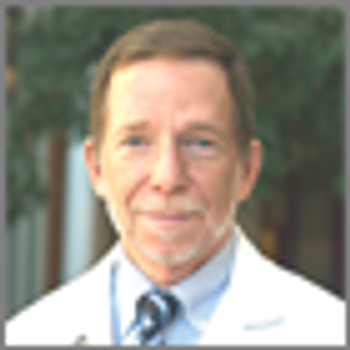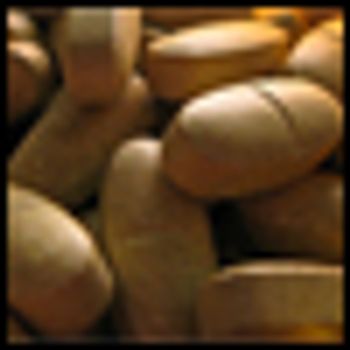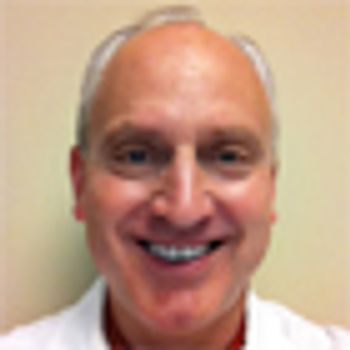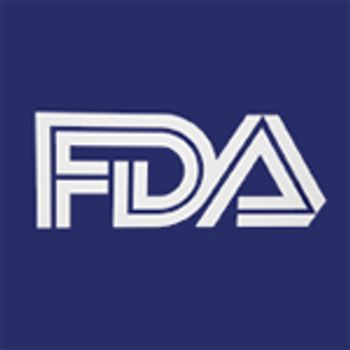
In this podcast we discuss integrating palliative care into standard oncology care with Thomas J. Smith, director of palliative medicine at Sidney Kimmel Comprehensive Cancer Center.

Your AI-Trained Oncology Knowledge Connection!


In this podcast we discuss integrating palliative care into standard oncology care with Thomas J. Smith, director of palliative medicine at Sidney Kimmel Comprehensive Cancer Center.

A significant portion of patients with incurable lung cancer believe that palliative radiation therapy will cure the disease or at least help them live longer, according to a new study. Only about one-third of patients acknowledged that the treatment was not at all likely to cure their cancer.

A large study of older doctors shows that those who took a daily multivitamin had an 8% lower risk of cancer compared to those who took a placebo pill.

Controlling healthcare spending has been, and appears destined to remain, at the center of the public policy debate at each level of government, given that much of the healthcare bill is paid by taxpayers.

The current system rations care in an irrational way. This irrational rationing is going to worsen, for the costs of the current system are simply not sustainable nor are they justifiable by almost any metric used.

Thymomas are uncommon neoplasms that have generated considerable controversy among pathologists. The following questions can be used to evaluate the evidence supporting current concepts about the pathology of thymomas and the clinical applicability of those concepts.

In Part I of this article, I will focus on our current understanding of drivers of cost for oncology care and the effect of the high cost on patients, as well as on how patients value treatment.

In this review we describe the current evidence for use of bisphosphonates as part of the adjuvant treatment of patients with early-stage breast cancer.

We describe areas where major inroads were initially achieved by targeting angiogenesis and by unraveling pathways in the heterogeneous tumors of mesenchymal origin-spurred by the identification of c-Kit–activating mutations in GIST and the regressions that ensued when tumors harboring these mutations were exposed to the tyrosine kinase inhibitor imatinib (Gleevec).

Adolescents and young adults want to be more involved in specific aspects of their end-of-life care and found a planning document to aid in those decisions helpful, according to the results of a recently published study.

Overweight cancer patients generally have a worse prognosis compared to their leaner counterparts. A new study published today in Cancer Research suggests a mechanism for the link between obesity and cancer.

When facing decisions involving children with cancer at the end of life, three themes drove parental decision making--communication, extending time, and understanding prognosis, according to a recent meta-analysis.

Dr. Breitbart discusses how to have an effective end-of-life conversation with a patient.


It has been a year since Congress passed the Affordable Food Act, which mandates that all Americans have adequate insurance for the purchase of groceries. Needless to say private industry, always willing to fill a new need, has answered the call.

WORK FOR THE BEST. Chief of Medical Oncology: An Opportunity to Influence, Innovate and Inspire Cancer Treatment Centers of America® (CTCA) is a single-specialty tertiary hospital system providing a comprehensive, fully integrative approach to cancer care. We offer standard of care oncology treatment options combined with therapies that support the entire person. It's a place where your contributions as a medical leader can influence outcomes and allow you the opportunity to work on innovative research initiatives, as well as inspire our medical staff to continue to strive for excellence in patient care. We are currently seeking an experienced Board Certified Medical Oncologist to join our Midwestern Regional Medical Center in Zion, IL, which is located in a far northern suburb of Chicago. In this highly visible position, you will have the opportunity to mentor, supervise and direct our 10-member employed medical oncology staff. Additionally, you will help design and support those programs that are currently in place, including centers of excellence initiatives. Other responsibilities will include identifying and leading investigator-initiated trials. Our excellent benefits include: • Competitive compensation with bonus opportunities • Paid medical malpractice • Relocation package • Paid holiday, vacations and generous CME • 401(k) with match Our Midwestern hospital is located midway between downtown Chicago and Milwaukee. We offer access to both metropolitan areas, as well as amenities that include world-class art museums and theater, professional sporting events, excellent schools and outstanding universities. For more information, please contact: Drexa Unverzagt, RN, MS National Director of Physician Recruitment E-mail: drexa.unverzagt@ctca-hope.com Phone: 847-746-4384www.cancercenter.com EOE Cancer Treatment Centers of America(r) Winning the fight against cancer every day.(r)






References:1. YERVOY package insert. Princeton, NJ: Bristol-Myers Squibb; 2011.2. Hodi FS, O'Day SJ, McDermott DF, et al. Improved survival with ipilimumab in patients with metastatic melanoma. N Engl J Med.2010;363(8);711-723.

References: 1. YERVOY package insert. Princeton, NJ: Bristol-Myers Squibb; 2011. 2. Hodi FS, O'Day SJ, McDermott DF, et al. Improved survival with ipilimumab in patients with metastatic melanoma. N Engl J Med. 2010;363(8);711-723. 3. Wolchock JD, Weber JS, Hamid O, et al, Ipilimumab efficacy and safety in patients with advanced melanoma: a retrspective analysis of HLA subtype from four trials. Cancer Immun. 2010;10:9-14. 4. Data on file. YERV 008. Bristol-Myers Squibb. Princeton, NJ April 2011.

The family of a young woman with a brainstem glioma has been haranguing her physician to continue bevacizumab treatment despite a significant decline in her functional status. How to respond?

In this podcast we discuss the long-term effects of chemotherapy on the cognitive function of cancer patients and the current status of research in this field.

The FDA has approved an ultrasound device shown to be capable of detecting small masses in dense breasts. The device is indicated for use in combination with mammography for breast cancer screening.

In updated guidelines, the USPSTF concludes that there is still no adequate evidence of a mortality benefit from routine ovarian cancer screening using transvaginal ultrasonography or CA-125 testing.


The AICR, noted for its investigation of links between lifestyle and cancer, has released a free digital book for cancer patients and survivors, with current, evidence-based advice on managing diet and activity during and after treatment.

WARNING: IMMUNE-MEDIATED ADVERSE REACTIONS YERVOY (ipilimumab) can result in severe and fatal immune-mediated adverse reactions due to T-cell activation and proliferation. These immune-mediated reactions may involve any organ system; however, the most common severe immune-mediated adverse reactions are enterocolitis, hepatitis, dermatitis (including toxic epidermal necrolysis), neuropathy, and endocrinopathy. The majority of these immune-mediated reactions initially manifested during treatment; however, a minority occurred weeks to months after discontinuation of YERVOY. Assess patients for signs and symptoms of enterocolitis, dermatitis, neuropathy and endocrinopathy and evaluate clinical chemistries including liver function tests (LFTs) and thyroid function tests at baseline and before each dose. Permanently discontinue YERVOY and initiate systemic high-dose corticosteroid therapy for severe immune-mediated reactions.